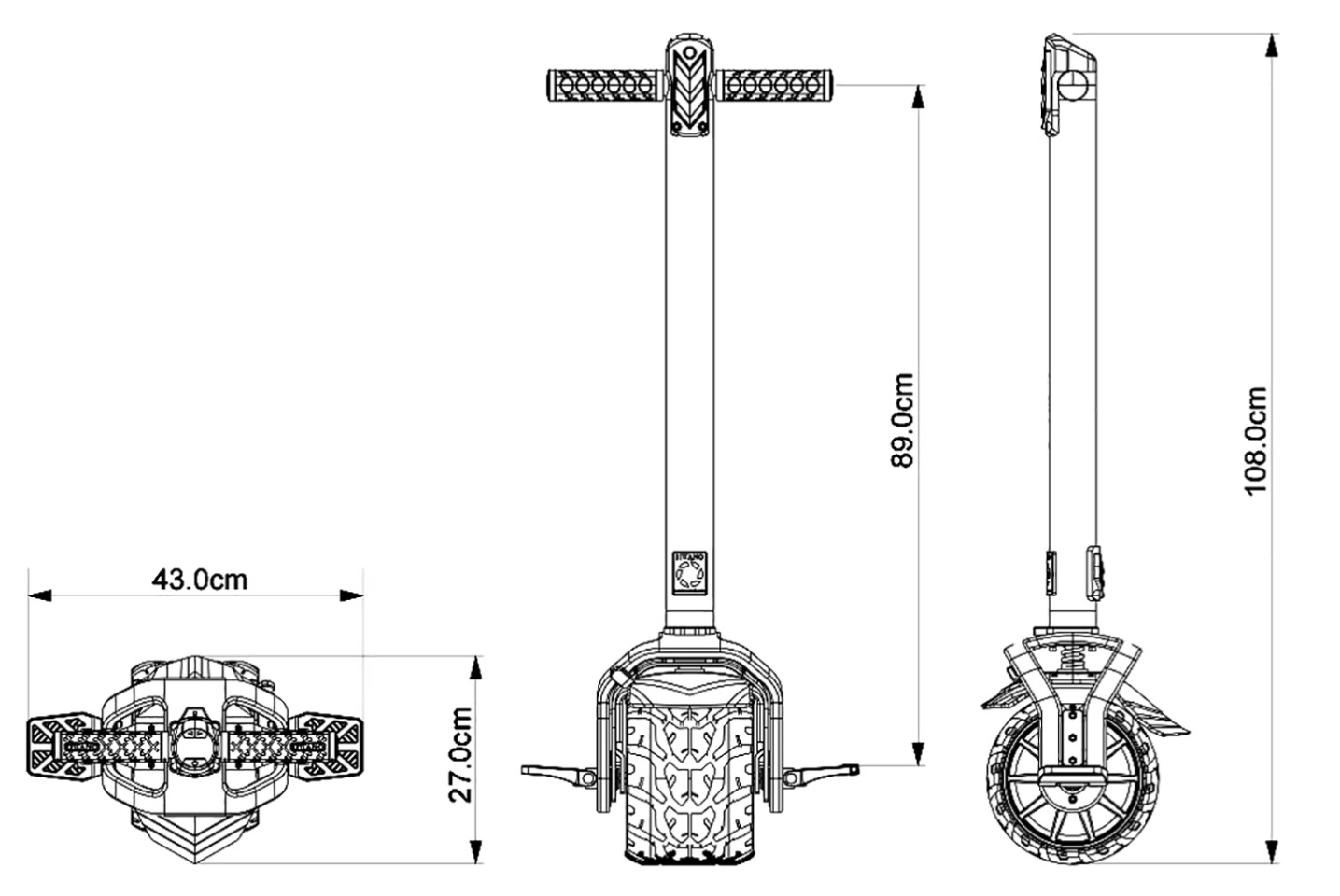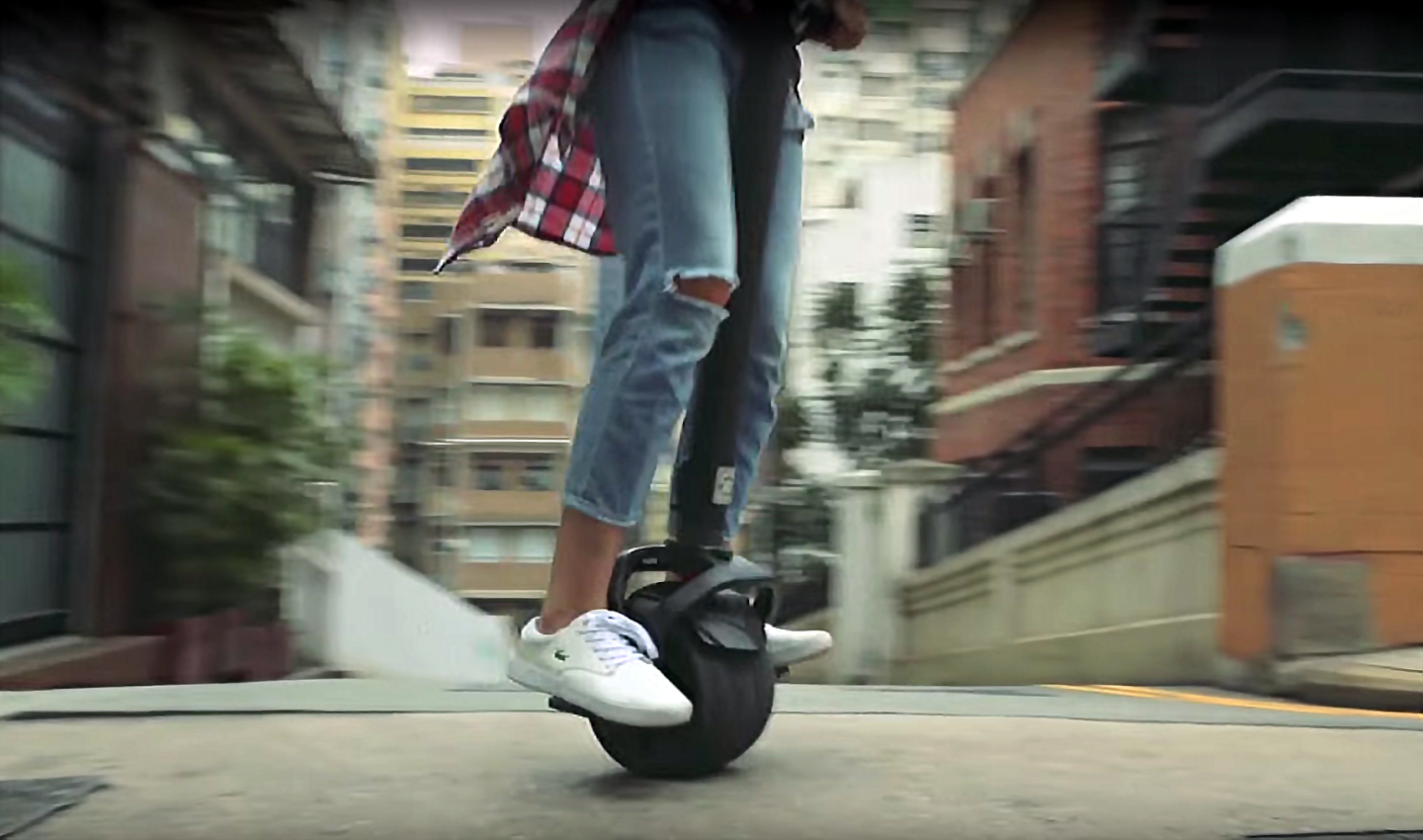The Kiwano K01 is a monowheel electric scooter with a range of 20 miles (32 km), a top speed of 20 mph (32 km/h) and a charge time of one hour, offering some considerable advantages over anything in its class and a viable commuter for under US$1,000.
The transportation appliance is a relatively new category of micro vehicle that has emerged over the last decade, primarily catalyzed by the fanfare that surrounded Dean Kamen's "Project Ginger" in 2001. Kamen's now legendary concept was endorsed by a platoon of tech celebrity insiders and investors and became global news for its groundbreaking, society-changing potential a full year before the public knew what it was, or even what product category it belonged to. It was finally unveiled as the Segway Human Transporter 17 years ago, and the rest is history.
Once legions of inventors got their head around the idea that self-balancing technologies were viable for transportation beyond the circus arena, things evolved rapidly. We've been covering this area since its conception, so we can track the massive interest in the category via story page views and our most viewed story in 2004 was Bombardier's Embrio, a futuristic self-balancing electric monowheel motorcycle powered by a fuel cell.

It was our humble site's first story to achieve a million page views, and when proposed by Bombardier's engineers it was clearly stated that it employed technologies that would not be commercially viable until 2025.

Bombardier's renderings were viewed as bordering on sci-fi at that time and it offers some perspective on the warp-speed pace of human endeavor in this space since then, because just a decade later I was writing about a commercial product that was very similar – the Ryno.
Even traditional transport companies like Honda and Toyota have been showing self-balancing prototypes for a decade. A sign of the times was Toyota's Winglet prototype being copied and commercialized by several Chinese companies four years ago. Toyota still hasn't delivered the concept to market.

Micro transportation is now a reality with the self-balancing technologies and energy storage shrinking inside a single wheel via InMotion, Airwheel, the Yikebike and many other lightweight transportation appliance form factors now on offer.
One of the major issues of such devices is usability. Not everyone has the balance of a cat and the rubber bones of a teenager – most thirty-somethings and older are reticent to threaten their wellbeing by learning how to ride a device that weighs 10-15 kg and resides entirely between one's ankles.

Hence the release this week of the Kiwano K01, a one-wheeled transportation appliance with handlebars to aid stability and balance, could further stimulate this already fast-growing marketplace. It's yet another form factor for the transport appliance and it makes sense.
At 16 kg (35 lb), and with the security afforded by those handlebars, the K01 self-balancing mono-scooter might find marketplace traction beyond those who grew up riding skateboards and other adventurous types who are prepared to sacrifice skin on their knees and elbows to depress their fun buttons.

The specs of the Kiwano K01 tick all the boxes and if the company's claims prove correct, it could offer a viable commuting machine for under US$1000. For the launch, the K01 is being initially offered at $800.

With a range of 20 miles (32 km), a top speed of 20 mph (32 km/h) and a charge time of one hour, it trumps the current marketplace offerings on the key points. It self balances, can be driven wirelessly via an app on your mobile phone (Apple iOS and Android), has shock suspension to soak up the bumps, and the 16 kg weight is only going to be a slight problem if it runs out of battery and you need to carry it.

That's not to say the Kiwano K01 is porky. That slight extra weight compared to the lightest devices on the market is what enables the K01 to deliver those exceptional figures: an efficient and powerful 1000 W motor with a top speed of 20 mph and a 232.2 Wh battery with a 20 mile range make for a perfectly viable commuter which can be carried by hand on public transport or in the boot of a car for "last mile" commuting.

We spoke with Oliver Evans, CEO of Shark Design and the newly formed Kiwano, to discuss the Kiwano K01 and the future roadmap for the company.
"The future of transportation is electric and the rapid development of electric motor and battery technology in the last decade means there is now an opportunity to develop some truly remarkable devices", said Evans.
We're very much a premium product, and we're aiming to develop the brand into the very top end of the market. That's why we're using the best batteries (LG) and using premium materials (carbon fiber) so we deliver something that's durable and that people will get plenty of use and enjoyment from.
"We're very serious about developing our own technologies at Kiwano and we have a roadmap for new products for the next three years which involves a number of new products, specific products for both children and early teens, two wheeled devices and ... there's more but we can't disclose those things as yet."
"We're launching with Best Buy in the USA in August, and we're going into other distributors and retailers worldwide. We're currently assembling in Asia, but we'll be making our products in the USA in the fall of 2017."
Check the Kiwano K01 out in action:
Product page: Kiwano

























